
|
Great outburst occured in 2007 October, and it bacame a naked eye comet of 2 mag. It kept so bright as 5.5 mag still in 2008 spring (Apr. 30, Carlos Labordena), but it was extremely faint and difficult to see. The size was so large, the diameter was larger than 60 arcmin. It will become observable in good condition in this autumn again. The extremely faint large diffuse object may be detected with a best sky condition, around 5-6 mag with a diameter of 1 or 2 degrees. Current brightness of the central core is 17.8 mag (Oct. 31, Ken-ichi Kadota), much brighter than pre-outburst brightness still now.
Date(TT) R.A. (2000) Decl. Delta r Elong. m1 Best Time(A, h)
Nov. 1 9 15.84 25 41.6 3.911 3.956 85 5.9 4:55 (287, 67)
Nov. 8 9 18.58 25 32.2 3.827 3.980 91 5.9 5:01 (298, 73)
|
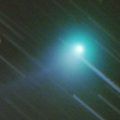
|
It reached to 6.3 mag in September in the southern sky (Sept. 4, Marco Goiato). Now it is still bright as 7.6 mag (Nov. 1, Timo Karhula). It became observable in the evening low sky also in the Northern Hemisphere. It keeps locating in the evening low sky until the end of 2008 when it fades out down to 10 mag. Then it turns to appear in the morning sky, and it keeps observable in the northern sky after that while fading gradually. In the Southern Hemisphere, it is only observable until late October.
Date(TT) R.A. (2000) Decl. Delta r Elong. m1 Best Time(A, h)
Nov. 1 16 49.42 -5 29.9 1.845 1.201 36 7.6 18:31 ( 71, 16)
Nov. 8 17 4.89 -1 53.1 1.923 1.256 35 7.9 18:26 ( 75, 17)
|
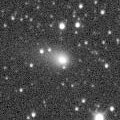
|
Now it is 8.5 mag (Oct. 25, Marco Goiato). It is expected to reach to 4 mag in 2009 February. It is unobservable temporarily in November, but it will appear in the morning sky again at 7 mag in late December. Then it keeps observable in the excellent condition long time around the highlight until spring.
Date(TT) R.A. (2000) Decl. Delta r Elong. m1 Best Time(A, h)
Nov. 1 16 16.09 -20 13.6 2.441 1.619 26 8.9 18:31 ( 65, 0)
Nov. 8 16 14.26 -20 10.9 2.452 1.554 19 8.6 18:26 ( 68, -4)
|

|
It is expected to reach up to 7 mag in winter, and will be observable in good condition. However, this comet has not been observed since 1986. It is predicted to be brightening up to around 9 mag, bright enough to be recovered. However, it was not detected, fainter than 20 mag on Sept. 26 (Gustavo Muler), and fainter than 17.2 mag on Oct. 18 (Katsumi Yoshimoto). It seems much fainter than expected. The condition of this apparition is good. It keeps observable for a long time until 2009 early summer both in the Northern Hemisphere and Southern Hemisphere.
Date(TT) R.A. (2000) Decl. Delta r Elong. m1 Best Time(A, h)
Nov. 1 20 23.28 -18 23.9 0.947 1.310 84 9.6 18:31 ( 15, 35)
Nov. 8 20 39.59 -16 50.9 0.938 1.267 82 9.0 18:26 ( 17, 37)
|
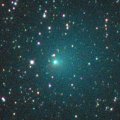
|
It reached up to 8.5 mag in September (Sept. 24, Juan Jose Gonzalez). Diffuse object expanding a large coma. It is still bright as 9.2 mag (Nov. 4, Marco Goiato). In the Northern Hemisphere, it locates extremely low now. Although it will be getting higher slowly after this, it will be fading gradually. However, it keeps observable in the evening sky until it becomes fainter than 18 mag early 2009.
Date(TT) R.A. (2000) Decl. Delta r Elong. m1 Best Time(A, h)
Nov. 1 23 16.75 -34 36.6 0.937 1.614 113 9.5 20:33 ( 0, 21)
Nov. 8 23 30.35 -32 46.3 1.021 1.656 110 9.9 20:19 ( 0, 22)
|
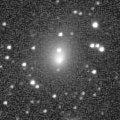
|
Brightening very rapidly, faster than expected. It is already so bright as 10.4 mag (Nov. 1, Seiichi Yoshida). Strongly condensed and easy to see. It is expected to reach to 8 mag in 2009 summer. Because it moves in the northern sky, it keeps observable until it becomes brightest in the Northern Hemisphere.
Date(TT) R.A. (2000) Decl. Delta r Elong. m1 Best Time(A, h)
Nov. 1 22 43.50 70 7.0 3.394 3.916 114 10.5 19:57 (180, 55)
Nov. 8 22 24.75 67 13.6 3.367 3.878 114 10.4 19:12 (180, 58)
|
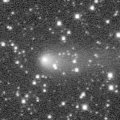
|
Now it is bright as 10.5 mag (Oct. 26, Juan Jose Gonzalez). It keeps observable in good conditioni as bright as 11 mag from autumn to winter. It keeps observable, visible visually, brighter than 14 mag for a long time until 2009 May.
Date(TT) R.A. (2000) Decl. Delta r Elong. m1 Best Time(A, h)
Nov. 1 6 41.47 60 45.8 1.894 2.484 115 10.7 4:00 (180, 64)
Nov. 8 6 45.47 61 3.0 1.858 2.501 119 10.7 3:36 (180, 64)
|
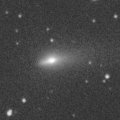
|
It reached up to 9.6 mag in summer (Aug. 2, Juan Jose Gonzalez). Now it is fading. It has already faded down to 12.0 mag (Nov. 1, Seiichi Yoshida). It keeps observable and fading in the morning sky after this. It keeps brighter than 14 mag and visible visually until the end of 2008. In the Southern Hemisphere, it keeps extremely low, or under the horizon, so it will not be observable.
Date(TT) R.A. (2000) Decl. Delta r Elong. m1 Best Time(A, h)
Nov. 1 11 34.76 26 48.2 2.072 1.769 58 12.3 4:55 (262, 39)
Nov. 8 11 52.13 26 32.5 2.064 1.816 61 12.6 5:01 (264, 42)
|
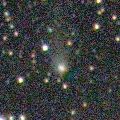
|
It brightened up to 11.5 mag in summer (Aug. 4, Marco Goiato). It keeps bright at 12 mag for a long time until 2009 spring. However, it is not observable in the Northern Hemisphere now. It will appear in the northern sky again in 2009 autumn, but it will be fainter than 15 mag and will keep locating very low after that. In the Southern Hemisphere, it keeps observable for a long time until it fades out, although it becomes low in autumn.
Date(TT) R.A. (2000) Decl. Delta r Elong. m1 Best Time(A, h)
Nov. 1 15 50.87 -51 0.2 3.329 2.652 40 12.3 18:31 ( 42,-21)
Nov. 8 15 59.52 -52 40.5 3.353 2.649 38 12.4 18:26 ( 41,-24)
|
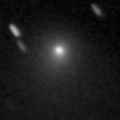
|
It reached to 10.9 mag in May (May 11, Marco Goiato). Now it is fading slowly. It has faded down to 12.0 mag on July 21 (Alexandre Amorim). Now it is not observable. In the Northern Hemisphere, it will appear in the morning sky again at 13 mag at the end of 2008, then it keeps bright and observable for a while.
Date(TT) R.A. (2000) Decl. Delta r Elong. m1 Best Time(A, h)
Nov. 1 14 15.01 -0 47.0 3.980 3.026 13 12.6 4:55 (265, -8)
Nov. 8 14 25.81 -0 26.9 3.986 3.056 17 12.7 5:01 (268, -3)
|
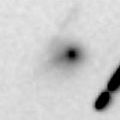
|
An outburst occured in late May and it brightened up to 14.6 mag (May 23, Gustavo Muler), but it faded down to the original brightness in late May. Then it had been reported so faint as 17 mag by CCD observations. However, it suddenly became so bright and visible visually after late August. Now it is so bright as 11.0 mag visually (Sept. 24, Juan Jose Gonzalez). Much brighter than originally predicted, by 3 mag. It locates extremely low in the Northern Hemisphere.
Date(TT) R.A. (2000) Decl. Delta r Elong. m1 Best Time(A, h)
Nov. 1 17 27.81 -29 21.9 1.836 1.325 44 12.9 18:31 ( 47, 6)
Nov. 8 17 56.61 -30 54.9 1.880 1.354 43 13.5 18:26 ( 45, 6)
|
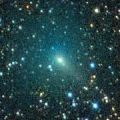
|
Diffuse comet, but it brightened up to 9.8 mag on July 7 (Juan Jose Gonzalez). Now it is fading, but still visible visually at 13.8 mag (Nov. 1, Seiichi Yoshida). In the Northern Hemisphere, it keeps observable until 2009 spring when the comet becomes faint. It will move near by the Northern Pole from summer to autumn, and will be observable all night. It will be visible visually for some more time. In the Southern Hemisphere, it will never be observable again.
Date(TT) R.A. (2000) Decl. Delta r Elong. m1 Best Time(A, h)
Nov. 1 1 34.93 89 35.0 1.754 2.226 104 13.2 22:52 (180, 36)
Nov. 8 1 24.34 87 9.3 1.754 2.280 109 13.5 22:14 (180, 38)
|
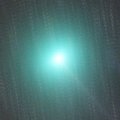
|
It became so bright as 4.7 mag, and so large as 20 arcmin in June (June 12, Marco Goiato). Now it is fading. But it is still visible visually at 13.8 mag (Nov. 1, Seiichi Yoshida). It keeps observable in good condition for a long time after this. Although it is extremely diffuse now, it will be visible visually for some more time in the excellent sky condition.
Date(TT) R.A. (2000) Decl. Delta r Elong. m1 Best Time(A, h)
Nov. 1 0 32.77 17 46.7 1.335 2.263 152 13.4 21:48 ( 0, 73)
Nov. 8 0 30.01 17 1.7 1.467 2.352 145 13.8 21:18 ( 0, 72)
|

|
Already bright as 13.5 mag, and visible visually (Oct. 7, Alan Hale). It is extremely low in the Northern Hemisphere now, but observable in good condition in the Southern Hemisphere. It is expected to brighten up to 10 mag from late 2009 to early 2010. Because the comet moves in the southern sky for a long time, it keeps impossible or very hard to observe in the Northern Hemisphere until 2009 September. But after 2009 October, it is observable at 10 mag for a while in good condition. In the Southern Hemisphere, it keeps observable for a long time while brightening until 2009 June when it brightens to 11 mag. But it becomes unobservable around and after the brightest time.
Date(TT) R.A. (2000) Decl. Delta r Elong. m1 Best Time(A, h)
Nov. 1 6 20.47 -50 44.8 4.020 4.260 97 13.6 3:38 ( 0, 4)
Nov. 8 6 19.14 -51 42.0 3.942 4.204 98 13.5 3:10 ( 0, 3)
|

|
An large outburst occured on Sept. 21, and it became so bright as 11.3 mag (Juan Antonio Henriquez Santana). It keeps bright as 10.7 mag still in November (Nov. 1, Seiichi Yoshida). Now the diameter is over 4 arcmin, looks very large and diffuse.
Date(TT) R.A. (2000) Decl. Delta r Elong. m1 Best Time(A, h)
Nov. 1 8 19.74 23 1.5 5.875 6.075 96 13.7 4:55 (319, 75)
Nov. 8 8 20.70 22 57.9 5.765 6.077 103 13.7 5:01 (349, 78)
|
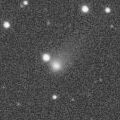
|
It brightened up to 12.7 mag in spring (Apr. 12, Marco Goiato). However, it has already faded down to 14.9 mag (July 22, Mitsunori Tsumura). It will never be observable again in the Northern Hemisphere. It is not observable now also in the Southern Hemisphere, but it will appear again in the morning sky at 15 mag in winter.
Date(TT) R.A. (2000) Decl. Delta r Elong. m1 Best Time(A, h)
Nov. 1 15 1.20 -32 21.1 3.976 3.060 19 14.6 18:31 ( 64,-20)
Nov. 8 15 14.40 -33 36.3 4.006 3.077 17 14.6 18:26 ( 64,-23)
|
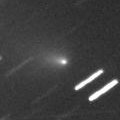
|
It had been lost for 112 years sincd 1896, but re-discovered by Koichi Itagaki and Hiroshi Kaneda on Sept. 10. It should be bright temporarily in outburst now. However, it still keeps bright as 13.2 mag (Nov. 1, Seiichi Yoshida). It keeps locating high in the evening sky for a while after this. It will keep visible visually for some more time.
Date(TT) R.A. (2000) Decl. Delta r Elong. m1 Best Time(A, h)
Nov. 1 22 20.38 -13 40.4 0.948 1.619 113 14.7 19:37 ( 0, 41)
Nov. 8 22 36.43 -13 45.5 1.021 1.644 109 15.0 19:25 ( 0, 41)
|

|
Now it is 14.0 mag, and visible visually (Nov. 1, Seiichi Yoshida). It locates near by Polaris until December, and observable all night. It will brighten gradually after this, and reach to 9-10 mag in 2009 June. In the Northern Hemisphere, it keeps observable in good condition until May when it becomes brightest. But it will never be observable again after that. In the Southern Hemisphere, it is not observable until 2009 April. But after that, it will be observable while fading gradually.
Date(TT) R.A. (2000) Decl. Delta r Elong. m1 Best Time(A, h)
Nov. 1 8 45.40 84 13.4 2.892 3.275 103 15.0 4:55 (182, 41)
Nov. 8 9 5.88 85 17.7 2.778 3.200 106 14.8 5:01 (182, 40)
|

|
Now it is 12.6 mag (Sept. 6, Juan Jose Gonzalez), bright and visible visually. It will be too low to observe soon. But it will locate high again in winter, and will be visible visually at 14 mag.
Date(TT) R.A. (2000) Decl. Delta r Elong. m1 Best Time(A, h)
Nov. 1 15 2.60 18 14.1 6.771 5.973 33 14.8 18:31 (107, 8)
Nov. 8 15 4.70 18 15.6 6.776 5.991 34 14.8 18:26 (110, 4)
|

|
It was 15 mag on Jan. 14 (Michael Mattiazzo), brightening as expected. It should have reached up to 13.5 mag in summer in the southern sky. Now it is fading. In the Southern Hemisphere, it keeps observable for a long time after this. It is finally appearing in the morning sky also in the Northern Hemisphere soon. It keeps observable while the comet will be fading slowly after this.
Date(TT) R.A. (2000) Decl. Delta r Elong. m1 Best Time(A, h)
Nov. 1 11 40.36 -29 48.5 3.638 2.961 40 15.0 4:55 (311, 4)
Nov. 8 11 48.00 -29 44.1 3.629 3.001 44 15.1 5:01 (315, 7)
|
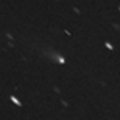
|
Now it is 13.9 mag (Nov. 1, Seiichi Yoshida), already visible visually. It will be brightening gradually after this, and reach to 12-13 mag in 2009 winter and spring. In the Northern Hemisphere, it keeps observable for a long time until 2009 May.
Date(TT) R.A. (2000) Decl. Delta r Elong. m1 Best Time(A, h)
Nov. 1 20 57.50 -25 20.9 1.554 1.855 90 15.1 18:31 ( 4, 30)
Nov. 8 21 5.48 -24 16.7 1.578 1.802 85 15.0 18:26 ( 8, 30)
|
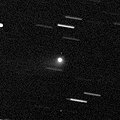
|
Now it is 14.3 mag and visible visually (Sept. 28, Alan Hale). It is observble in good condition still in November. But it starts fading in December, and will get lower in the evening sky in January.
Date(TT) R.A. (2000) Decl. Delta r Elong. m1 Best Time(A, h)
Nov. 1 1 28.10 20 34.0 2.458 3.426 164 15.1 22:42 ( 0, 76)
Nov. 8 1 9.19 19 18.7 2.518 3.442 155 15.2 21:55 ( 0, 74)
|
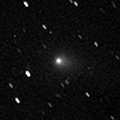
|
It passed near by earth in October. It has brightened more rapidly than expected. Now it is visible visually at 14.2 mag (Nov. 1, Seiichi Yoshida). However, it will fade out rapidly in November, and will be fainter than 18 mag in late December.
Date(TT) R.A. (2000) Decl. Delta r Elong. m1 Best Time(A, h)
Nov. 1 2 48.39 12 40.6 0.399 1.390 174 15.1 0:07 ( 0, 68)
Nov. 8 2 50.45 13 45.4 0.410 1.400 177 15.4 23:38 ( 0, 69)
|

|
Not recovered yet, but it must be brightening very rapidly in the evening sky. It is expected to reach up to 7.5 mag in January. However, it is not observable for about a month around the highlight. In the Northern Hemisphere, it keeps locating low in the evening sky until the highlight. But it turns to appear in the morning sky after February, then it keeps observable in good condition while fading gradually. In the Southern Hemisphere, it locates high except for January.
Date(TT) R.A. (2000) Decl. Delta r Elong. m1 Best Time(A, h)
Nov. 1 19 16.78 -30 43.7 1.377 1.363 68 15.7 18:31 ( 27, 19)
Nov. 8 19 26.43 -30 19.2 1.354 1.267 63 15.2 18:26 ( 29, 18)
|

|
Now it is 17.0 mag (Oct. 17, Ken-ichi Kadota). It will brighten rapidly after this. It will be observable at 12-13 mag for a long time from January to July in 2009. It may be already bright as around 14.5 mag visually (Nov. 1, Seiichi Yoshida).
Date(TT) R.A. (2000) Decl. Delta r Elong. m1 Best Time(A, h)
Nov. 1 9 22.34 19 13.6 2.742 2.781 81 15.4 4:55 (297, 62)
Nov. 8 9 30.17 18 44.5 2.624 2.755 86 15.2 5:01 (308, 66)
|
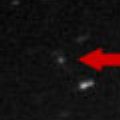
|
Now it is 15.6 mag (Sept. 18, Siding Spring Survey). It will be getting lower in the evening sky, and it will be unobservable in December.
Date(TT) R.A. (2000) Decl. Delta r Elong. m1 Best Time(A, h)
Nov. 1 17 44.82 -15 19.2 2.463 1.945 48 15.5 18:31 ( 54, 19)
Nov. 8 18 1.49 -15 44.9 2.483 1.916 45 15.4 18:26 ( 55, 18)
|
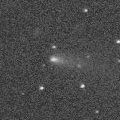
|
Now it is 13.9 mag and visible visually (Nov. 1, Seiichi Yoshida). It will be fading slowly after this. But it keeps observable in good condition until February when it becomes fainter than 18 mag.
Date(TT) R.A. (2000) Decl. Delta r Elong. m1 Best Time(A, h)
Nov. 1 3 27.64 8 45.5 1.181 2.152 163 15.7 0:47 ( 0, 64)
Nov. 8 3 23.25 8 12.7 1.182 2.163 168 15.8 0:15 ( 0, 63)
|

|
It recovered as bright as expected, 16.4 mag on Oct. 15 (Ken-ichi Kadota). It will reach up to 16 mag until November, and will be observable in good condition. It keeps observable in the morning sky until January when it will be fainter than 18 mag.
Date(TT) R.A. (2000) Decl. Delta r Elong. m1 Best Time(A, h)
Nov. 1 10 48.26 -2 10.7 1.055 0.948 55 15.9 4:55 (299, 32)
Nov. 8 11 19.66 -5 8.7 1.095 0.945 53 15.9 5:01 (302, 30)
|
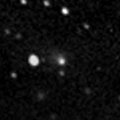
|
Now it is 14.6 mag and visible visually (Aug. 6, Juan Jose Gonzalez). It locates somewhat low in the Northern Hemisphere, but it keeps observable around 15-16 mag until winter.
Date(TT) R.A. (2000) Decl. Delta r Elong. m1 Best Time(A, h)
Nov. 1 21 8.30 -22 33.1 2.603 2.849 93 15.9 18:31 ( 2, 33)
Nov. 8 21 13.98 -21 33.4 2.689 2.842 88 16.0 18:26 ( 6, 33)
|
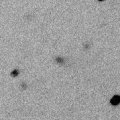
|
Now it is 16.6 mag (Oct. 25, Catalina Sky Survey). It will be observable at 16 mag in good condition from autumn to winter.
Date(TT) R.A. (2000) Decl. Delta r Elong. m1 Best Time(A, h)
Nov. 1 2 17.06 29 49.7 1.575 2.545 164 16.1 23:32 ( 0, 85)
Nov. 8 2 11.77 29 28.0 1.559 2.526 163 16.0 22:59 ( 0, 84)
|
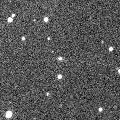
|
Now it is 16.6 mag (Oct. 3, Ken-ichi Kadota). It will be observable at 15 mag in good condition in winter.
Date(TT) R.A. (2000) Decl. Delta r Elong. m1 Best Time(A, h)
Nov. 1 9 27.56 19 56.2 3.701 3.678 80 16.2 4:55 (295, 61)
Nov. 8 9 32.71 19 45.8 3.593 3.672 86 16.1 5:01 (305, 66)
|
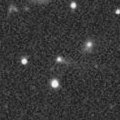
|
Now it is 14.5 mag and visible visually (Nov. 1, Seiichi Yoshida). Brightened rapidly, and it still keeps brightening even after passing the perihelion. It will be observable at 15-16 mag in good condition until November.
Date(TT) R.A. (2000) Decl. Delta r Elong. m1 Best Time(A, h)
Nov. 1 0 50.70 15 29.5 1.463 2.408 157 16.1 22:06 ( 0, 70)
Nov. 8 0 50.77 13 30.3 1.515 2.425 150 16.2 21:38 ( 0, 68)
|
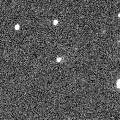
|
It will brighten up to 12-13 mag in 2010 summer. It is already brightening up to 16-17 mag, and will be getting higher gradually in the morning sky. It reaches to 14.5 mag in 2009 spring, and keeps observable in good condition until 2009 summer.
Date(TT) R.A. (2000) Decl. Delta r Elong. m1 Best Time(A, h)
Nov. 1 11 36.73 12 16.7 4.125 3.563 49 16.5 4:55 (277, 32)
Nov. 8 11 44.28 11 39.7 4.023 3.543 54 16.4 5:01 (282, 36)
|
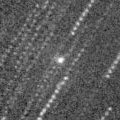
|
It had been lost since its discovery in 1892, but finally recovered. It passes extremely near by the earth in October. Now it is bright as 16.0 mag (Oct. 21, Michael Jager). However, because it is a very tiny comet, it will fade out very soon. It will be fainter than 18 mag in late November, and fainter than 20 mag in late Decemeber. In addition, it moves southwards very fast.
Date(TT) R.A. (2000) Decl. Delta r Elong. m1 Best Time(A, h)
Nov. 1 0 13.42 -25 1.8 0.226 1.149 129 16.6 21:32 ( 0, 29)
Nov. 8 0 55.11 -35 25.8 0.279 1.159 120 17.1 21:46 ( 0, 19)
|
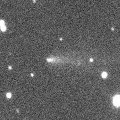
|
It was visible visually at 14.0 mag in autumn (Sept. 7, Juan Jose Gonzalez). Now it is fading, but it keeps observable in good condition until it fades out in winter. Now it is 15.0 mag (Nov. 1, Ken-ichi Kadota), still bright unexpectedly.
Date(TT) R.A. (2000) Decl. Delta r Elong. m1 Best Time(A, h)
Nov. 1 4 48.26 18 13.6 1.218 2.113 145 16.7 2:07 ( 0, 73)
Nov. 8 4 42.93 18 21.5 1.216 2.150 153 16.9 1:34 ( 0, 73)
|
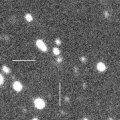
|
It will be observable at 16.5-17 mag in good condition in autumn. It will be fainter than 18 mag in February.
Date(TT) R.A. (2000) Decl. Delta r Elong. m1 Best Time(A, h)
Nov. 1 19 20.30 22 30.8 1.813 1.926 80 16.8 18:31 ( 71, 62)
Nov. 8 19 33.74 23 2.7 1.838 1.916 79 16.8 18:26 ( 74, 61)
|
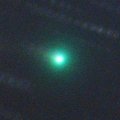
|
It brightened up to 9.2 mag on July 15 (Juan Jose Gonzalez). It was bright as 10.9 mag still on Aug. 9 (Juan Jose Gonzalez). However, it is fading rapidly after mid August. It is already invisible visually, fainter than 13.1 mag (Sept. 9, Seiichi Yoshida). It has already faded down to 16.9 mag on Oct. 15 by CCD (Ken-ichi Kadota). It keeps observable by CCD until it fades out in winter.
Date(TT) R.A. (2000) Decl. Delta r Elong. m1 Best Time(A, h)
Nov. 1 9 14.50 23 51.7 1.786 1.967 85 16.9 4:55 (291, 66)
Nov. 8 9 20.05 23 49.9 1.761 2.032 90 17.3 5:01 (302, 71)
|

|
Now it is 17.4 mag (Sept. 9, Ken-ichi Kadota). It will brighten up to 12 mag in 2012. It is faint still in 2008, but observable at 17 mag in good condition.
Date(TT) R.A. (2000) Decl. Delta r Elong. m1 Best Time(A, h)
Nov. 1 22 43.88 4 16.3 9.609 10.203 124 17.0 19:59 ( 0, 59)
Nov. 8 22 41.77 3 57.4 9.677 10.166 117 17.0 19:30 ( 0, 59)
|
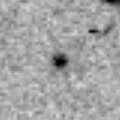
|
Now it is 16.1 mag (Nov. 1, Ken-ichi Kadota). It was origibally expected to reach up to 10 mag in winter based on the brightness at the discovery. But actually, it is much fainter than expected. However, now it seems brightening faster than this ephemeris. It keeps observable in good condition for a long time until next spring.
Date(TT) R.A. (2000) Decl. Delta r Elong. m1 Best Time(A, h)
Nov. 1 3 29.68 22 12.4 0.756 1.730 162 17.3 0:48 ( 0, 77)
Nov. 8 3 27.89 21 38.9 0.705 1.690 170 17.0 0:19 ( 0, 77)
|
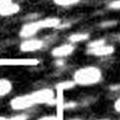
|
It was observed at 16.5-17 mag in 2007 autumn. Now it is 17.3 mag (July 2, J. F. Hernandez). It will be observable at 17 mag for a long time from summer to autumn.
Date(TT) R.A. (2000) Decl. Delta r Elong. m1 Best Time(A, h)
Nov. 1 5 5.81 28 28.3 1.968 2.806 140 17.2 2:24 ( 0, 83)
Nov. 8 5 1.34 28 20.1 1.944 2.835 148 17.2 1:53 ( 0, 83)
|
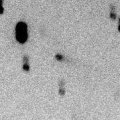
|
It is observable at 17.5 mag in good condition in autumn. It will be fainter than 18 mag in December.
Date(TT) R.A. (2000) Decl. Delta r Elong. m1 Best Time(A, h)
Nov. 1 1 34.62 28 9.9 0.752 1.723 161 17.2 22:49 ( 0, 83)
Nov. 8 1 32.21 28 1.0 0.765 1.724 158 17.3 22:20 ( 0, 83)
|
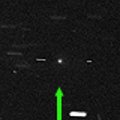
|
Now it is observable in good condition at 17.5 mag. But it will be fainter than 18 mag in winter.
Date(TT) R.A. (2000) Decl. Delta r Elong. m1 Best Time(A, h)
Nov. 1 1 36.86 7 21.7 1.563 2.538 166 17.5 22:52 ( 0, 62)
Nov. 8 1 32.62 7 22.1 1.584 2.531 158 17.5 22:20 ( 0, 62)
|
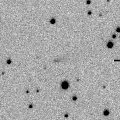
|
It was bright as 16.5 mag on Aug. 31 (Michael Jager). But it has alraedy faded down to 17.5 mag (Oct. 5, C. Rinner, F. Kugel). It will be fainter than 18 mag in December.
Date(TT) R.A. (2000) Decl. Delta r Elong. m1 Best Time(A, h)
Nov. 1 10 32.81 16 3.2 1.824 1.669 65 17.5 4:55 (284, 47)
Nov. 8 10 46.65 14 58.5 1.806 1.714 68 17.6 5:01 (290, 50)
|

|
It is observable in good condition at 17.5 mag from November to December.
Date(TT) R.A. (2000) Decl. Delta r Elong. m1 Best Time(A, h)
Nov. 1 3 36.97 40 39.4 1.472 2.381 149 17.8 0:57 (180, 84)
Nov. 8 3 18.61 39 53.6 1.431 2.370 156 17.6 0:11 (180, 85)
|

|
It reached up to 16 mag last winter. Now it is fading, but it will be observable at 17.5 mag in good condition from autumn to winter.
Date(TT) R.A. (2000) Decl. Delta r Elong. m1 Best Time(A, h)
Nov. 1 4 56.04 17 30.4 4.965 5.796 143 17.6 2:15 ( 0, 73)
Nov. 8 4 52.36 17 55.9 4.940 5.831 151 17.6 1:44 ( 0, 73)
|
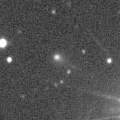
|
It was observed as bright as 14-15 mag in 2007 autumn. It will be observable at 17.5 mag in good condition from autumn to winter in 2008.
Date(TT) R.A. (2000) Decl. Delta r Elong. m1 Best Time(A, h)
Nov. 1 8 20.25 31 8.7 3.001 3.298 98 17.7 4:55 (290, 80)
Nov. 8 8 23.35 31 18.2 2.930 3.324 104 17.6 5:01 (323, 85)
|
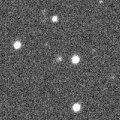
|
It will brighten up to 15 mag in 2009 and 2010. In this autumn, it is observable at 17.5 mag in good condition.
Date(TT) R.A. (2000) Decl. Delta r Elong. m1 Best Time(A, h)
Nov. 1 21 29.83 15 26.3 3.842 4.268 108 17.7 18:45 ( 0, 70)
Nov. 8 21 25.07 15 0.6 3.907 4.220 101 17.7 18:26 ( 9, 70)
|

|
Although it was so faint as 20 mag in early September, now it should be brightening. It will be observable ato 17 mag in good condition in winter.
Date(TT) R.A. (2000) Decl. Delta r Elong. m1 Best Time(A, h)
Nov. 1 7 54.20 17 37.2 1.509 1.967 101 18.1 4:55 (347, 72)
Nov. 8 8 4.51 17 25.4 1.435 1.958 106 17.8 4:55 ( 0, 72)
|

|
No observations have been reported recently. But it must be brightening up to 18 mag already. It will be observable at 15 mag in good condition in 2009 spring.
Date(TT) R.A. (2000) Decl. Delta r Elong. m1 Best Time(A, h)
Nov. 1 11 20.48 22 55.7 3.191 2.808 58 18.0 4:55 (268, 40)
Nov. 8 11 30.28 21 58.0 3.092 2.785 62 17.8 5:01 (273, 45)
|

|
It will be observable at 18 mag in good condition from autumn to winter.
Date(TT) R.A. (2000) Decl. Delta r Elong. m1 Best Time(A, h)
Nov. 1 10 20.08 29 30.3 2.390 2.317 73 17.9 4:55 (268, 55)
Nov. 8 10 32.89 29 32.1 2.334 2.336 77 17.9 5:01 (270, 60)
|
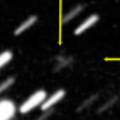
|
It was predicted to be so bright as 14 mag from spring to summer in 2008. But actually, it was extremely faint as 19.5 mag (Aug. 4, Gustavo Muler). Although it locates in good condition, it will be hard to observe.
Date(TT) R.A. (2000) Decl. Delta r Elong. m1 Best Time(A, h)
Nov. 1 22 12.05 10 48.0 2.433 3.030 118 20.8 19:28 ( 0, 66)
Nov. 8 22 16.55 10 25.5 2.566 3.086 112 21.0 19:05 ( 0, 65)
|
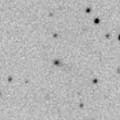
|
It was observed bright at 16.5-17 mag from late 2006 to early 2007. However, it is fading after that, although it is getting closer to the sun. It was so faint as 19.4 mag around the perihelion passage in 2008 spring (Mar. 10, Mitsunori Tsumura). This comet was observed so faint around the perihelion passage in the previous apparition at the discovery. It faded out before the perihelion passage again in this apparition.
Date(TT) R.A. (2000) Decl. Delta r Elong. m1 Best Time(A, h)
Nov. 1 11 11.29 17 44.2 4.720 4.274 57 21.5 4:55 (276, 40)
Nov. 8 11 17.66 17 29.3 4.634 4.279 63 21.5 5:01 (281, 45)
|
|
![]()
 6P/d'Arrest
6P/d'Arrest C/2006 W3 ( Christensen )
C/2006 W3 ( Christensen ) C/2006 OF2 ( Broughton )
C/2006 OF2 ( Broughton ) 19P/Borrelly
19P/Borrelly C/2007 G1 ( LINEAR )
C/2007 G1 ( LINEAR ) C/2006 Q1 ( McNaught )
C/2006 Q1 ( McNaught ) 7P/Pons-Winnecke
7P/Pons-Winnecke C/2008 J1 ( Boattini )
C/2008 J1 ( Boattini ) C/2007 W1 ( Boattini )
C/2007 W1 ( Boattini ) C/2007 Q3 ( Siding Spring )
C/2007 Q3 ( Siding Spring ) 29P/Schwassmann-Wachmann 1
29P/Schwassmann-Wachmann 1 C/2007 B2 ( Skiff )
C/2007 B2 ( Skiff ) 205P/2008 R6 ( Giacobini )
205P/2008 R6 ( Giacobini ) C/2008 T2 ( Cardinal )
C/2008 T2 ( Cardinal ) C/2005 L3 ( McNaught )
C/2005 L3 ( McNaught ) C/2006 U6 ( Spacewatch )
C/2006 U6 ( Spacewatch ) 67P/Churyumov-Gerasimenko
67P/Churyumov-Gerasimenko C/2007 U1 ( LINEAR )
C/2007 U1 ( LINEAR ) P/2008 Q2 ( Ory )
P/2008 Q2 ( Ory ) P/2003 K2 ( Christensen )
P/2003 K2 ( Christensen ) 116P/Wild 4
116P/Wild 4 68P/Klemola
68P/Klemola 61P/Shajn-Schaldach
61P/Shajn-Schaldach 207P/2008 T5 ( NEAT )
207P/2008 T5 ( NEAT ) 47P/Ashbrook-Jackson
47P/Ashbrook-Jackson 59P/Kearns-Kwee
59P/Kearns-Kwee 74P/Smirnova-Chernykh
74P/Smirnova-Chernykh P/2008 L2 ( Hill )
P/2008 L2 ( Hill ) 65P/Gunn
65P/Gunn 206P/2008 T3 ( Barnard-Boattini )
206P/2008 T3 ( Barnard-Boattini ) 51P/Harrington
51P/Harrington C/2008 R3 ( LINEAR )
C/2008 R3 ( LINEAR ) 15P/Finlay
15P/Finlay C/2006 S3 ( LONEOS )
C/2006 S3 ( LONEOS ) 144P/Kushida
144P/Kushida 44P/Reinmuth 2
44P/Reinmuth 2 P/2008 QP20 ( LINEAR-Hill )
P/2008 QP20 ( LINEAR-Hill ) P/2008 T4 ( Hill )
P/2008 T4 ( Hill ) 201P/2008 Q4 ( LONEOS )
201P/2008 Q4 ( LONEOS ) (3200) Phaethon
(3200) Phaethon C/2006 K1 ( McNaught )
C/2006 K1 ( McNaught ) 188P/2007 J7 ( LINEAR-Mueller )
188P/2007 J7 ( LINEAR-Mueller ) C/2008 N1 ( Holmes )
C/2008 N1 ( Holmes ) 204P/2008 R5 ( LINEAR-NEAT )
204P/2008 R5 ( LINEAR-NEAT ) 77P/Longmore
77P/Longmore 33P/Daniel
33P/Daniel C/2007 K3 ( Siding Spring )
C/2007 K3 ( Siding Spring ) 173P/2005 T1 ( Mueller 5 )
173P/2005 T1 ( Mueller 5 )![]()







































